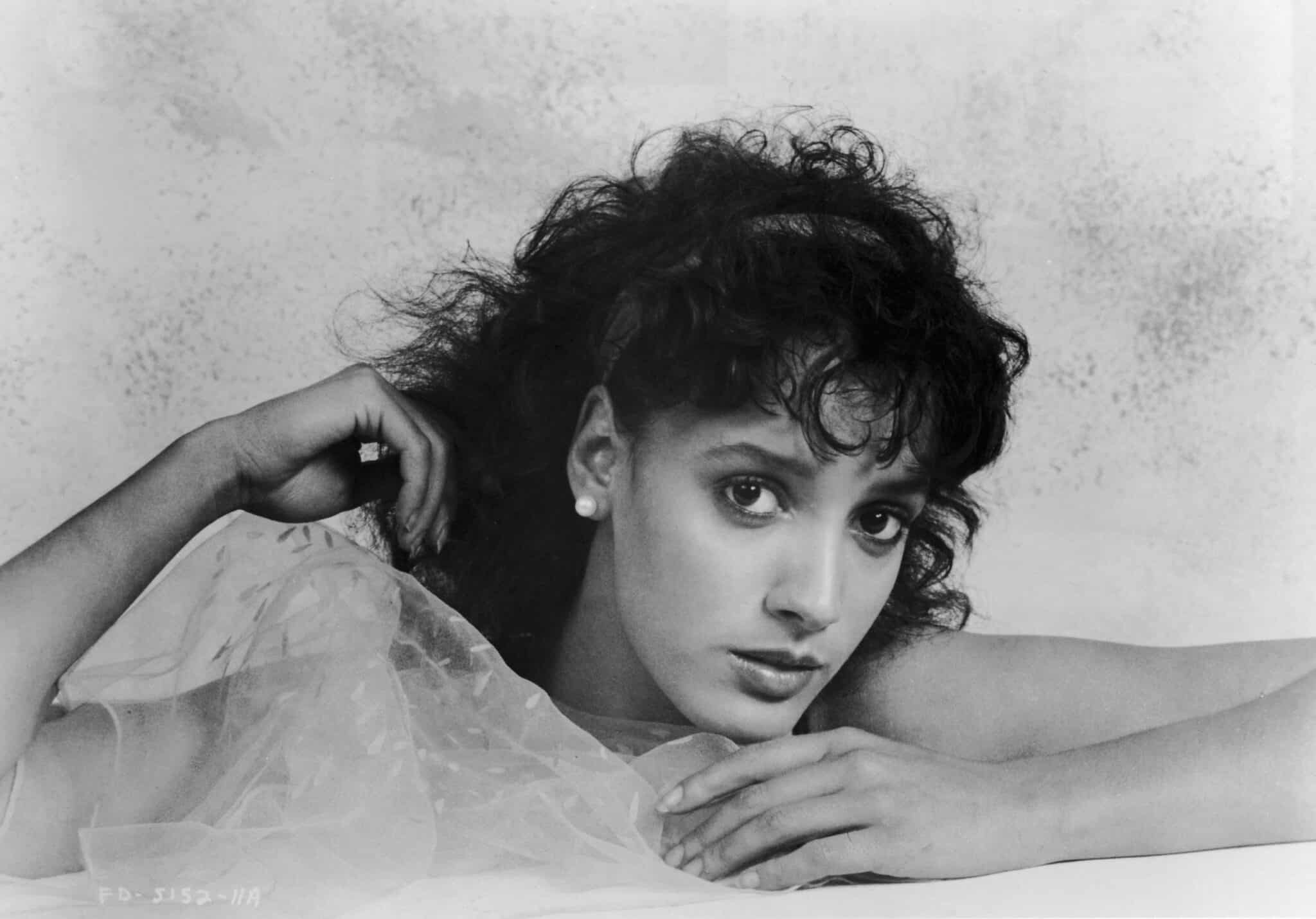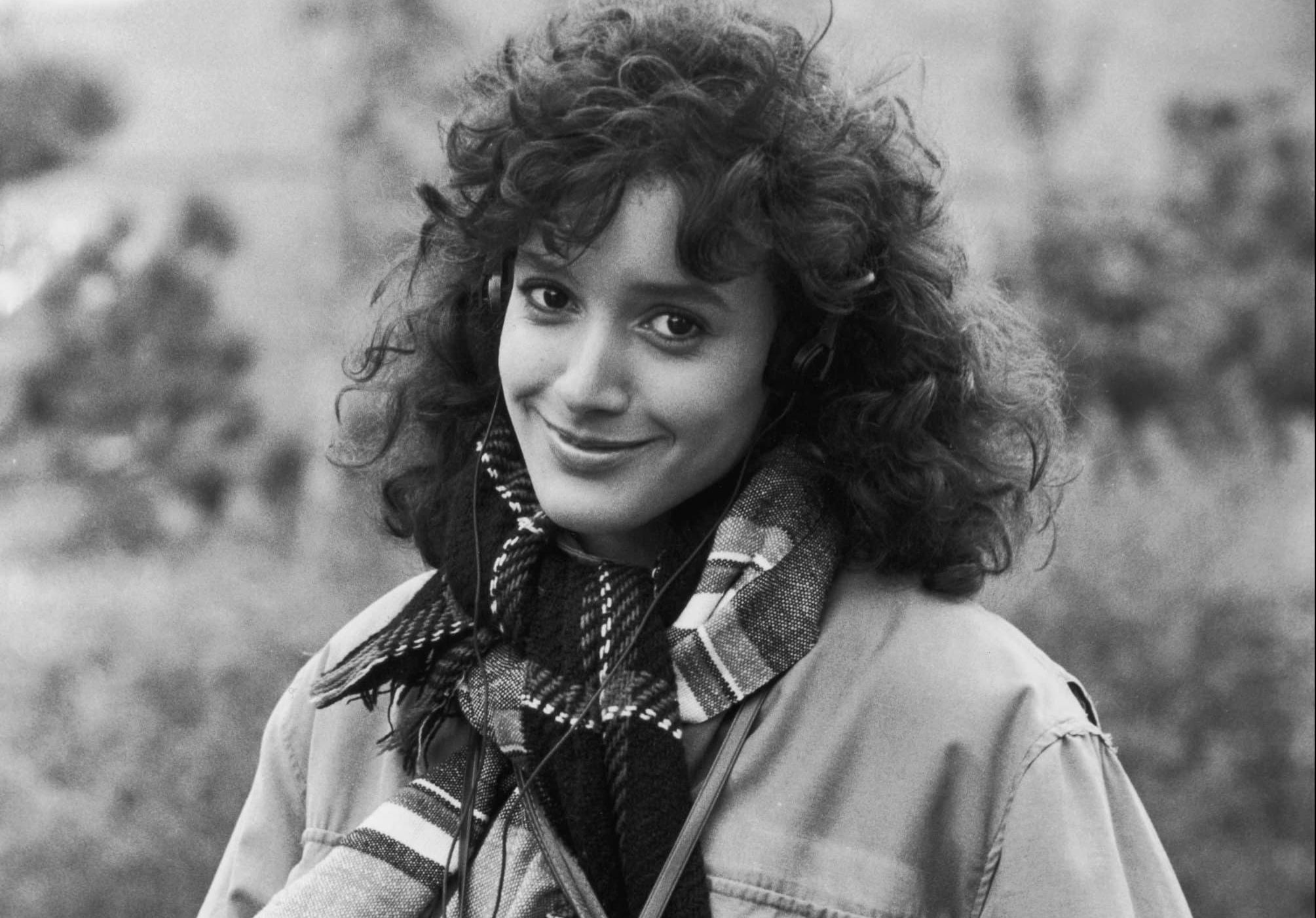With 1983’s Flashdance, Jennifer Beals was transformed from an unknown Yale student to an international sex symbol overnight. As Alex Owens, a young Pittsburgh woman who welds by day and dances by night, Beals would become best known for some of the most iconic dance scenes put to film. These scenes, however, actually relied heavily on several hidden, uncredited talents.
While Beals can actually dance and did perform some of her famous moves in Flashdance, the film’s dance scenes were largely completed by three different body doubles: Marine Jahan, Sharon Shapiro and 16-year-old male breakdancer Richard ‘Crazy Legs’ Colón.

Born on December 19, 1963, and raised in Chicago, Jennifer Beals spent her childhood alongside her older brother Gregory and younger brother Bobby. Her father Alfred, an African-American grocery store owner, died when she was nine years old. The three children were then raised solely by their Irish-American mother Jeanne, who was an elementary school teacher.
Jennifer’s childhood was not always easy. “I’ve always lived sort of on the outside,” she later noted to Curve Magazine, referring to her biracial heritage. “The idea of being ‘the other’ in society is not foreign to me.” Unusually tall for her age, Beals secured her first job at an ice cream parlour when she was 13, after telling the boss she was 16. She also excelled academically, but her high school production of Fiddler on the Roof persuaded her that she was destined to work in show business.
Whilst studying American Literature at Yale University, Beals made her film debut with a minor role in the 1980 comedy My Bodyguard, then auditioned for an upcoming movie called Flashdance. Producers Don Simpson and Jerry Bruckheimer whittled down their choices for the female lead, steel welder Alexandra ‘Alex’ Owens, to three actresses: Demi Moore, Leslie Wing and Beals.

According to Flashdance scriptwriter Joe Eszterhas, Beals won the role after a particularly demeaning vote. Eszterhas claimed that the filmmakers summoned “two hundred of the most macho men on the [Paramount] lot, Teamsters and gaffers and grips”, and told them, “‘I want to know which of these three young women you’d most want to f***.'” Beals won the vote and was cast in the role.
Unfazed by this objectification, Beals was delighted to star in a movie, and chose to defer a term at Yale for Flashdance (she returned to academia afterwards). However, while the filmmakers agreed Beals looked right for the part, there was one significant issue: the actor’s limited skills as a dancer.
Flashdance called for complex choreography, as Alex Owens transforms from a labourer to a dancer. Despite Beals having attended dance classes before, she wasn’t skilled enough for the more challenging moves. The filmmakers therefore decided to use body doubles to cover the different dance styles.
The lion’s share of Alex’s dancing was performed by French actress and dancer Marine Jahan, who was four years Beals’ senior. On top of doubling for much of Beals’ dancing, and for many of the close-ups of the protagonist’s body, Jahan also stood in for Beals in the scenes involving bike riding. Jahan also got the most famous shot in the movie: the water drop.

Director Adrian Lyne tested this celebrated, often-imitated dance scene in front of studio executives, recalling: “They were genuinely worried whether the weight of the water falling on her was gonna break the girl’s neck… It was a hell of a lot of water,” he admitted. “Marine Jahan was very good, the way she just soldiered on and made it look like it was nice. But it was obviously a nightmare.”
Jahan was promised full credit for her work on Flashdance, and was left bitterly disappointed when she went unnamed in the movie’s final cut. She was later told that her involvement was hidden because the producers “didn’t want to break the magic of the film.”
There were also certain dance moments that Jahan herself could not pull off. A slow-motion shot of Alex flying through the air, plus various flips, were completed by the gymnast Sharon Shapiro. Then, the final dance sequence posed a particular challenge, as the filmmakers wanted to incorporate the comparatively new dance craze of breakdancing.

An earlier breakdance sequence in the movie featured the hip-hop group Rock Steady Crew, but it proved difficult to teach either Shapiro or Jahan to dance in this style. Their many failed attempts left the female dancers bruised, and so the team made the unorthodox choice to cast Richard ‘Crazy Legs’ Colón, a 16-year-old member of the Rock Steady Crew, as Beals’ breakdancing double.
Although he described it as a “great experience”, Colón has noted that performing his role in drag would be challenging on a different level. The young performer had to shave his moustache, legs and underarms for the scene, and donned a curly wig. “Being the first person in hip-hop to dress in drag – I had to deal with that for years,” Colón later noted of a role that tested his street cred.
“It’s funny when you slow that scene down and see what’s really going on,” he later recalled to the New York Post. “There’s a lot of manhood!” Later that decade, Colón thanked his lucky stars for the Flashdance role. “There was a time that I was unemployed, but the Flashdance residual checks kept coming in,” he said. “That really helped.”

Flashdance met with mixed reviews, but the dancing received praise, often drawing unfavourable comparisons to Beals’ acting. “The dance sequences are sexy and energetic, more than compensating for a love relationship in the film that is thoroughly wooden,” critic Gene Siskel noted. Nevertheless, the movie grossed over $200 million and became one of the best-performing box office releases of 1983.
Beals turned down the offer of a sequel, later explaining: “I’ve never been drawn to something by virtue of how rich or famous it will make me. I turned down so much money, and my agents were just losing their minds.” She has continued to work extensively as an actress in film and TV, but has steered clear of blockbusters ever since.

